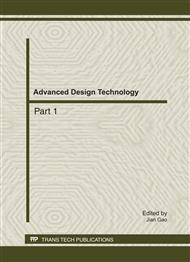[1]
Hu Jian-dong, Yu Yong-chang, Jiang Min, et al. Technology of a fertilizing expert system PDA for crop growing ,Transactions of The Chinese Society of Agricultural Engineering,Vol.22(2006),p.149.
Google Scholar
[2]
Liao Ying, Liang Jiahong, Liao Chaowei, et al. Research on the application of multi-combined technologies of fault diagnosis on missile seekers, Journal of Astronautics,Vol.3 (2006), p.30.
Google Scholar
[3]
Tan Wenxue, Chen Hongbo, Guo Guoqiang, et al. Multi-engine Animal Disease Diagnostic Expert System, Computer Engineering,Vol.34 (2008), p.193.
Google Scholar
[4]
D Randall Wilson. Improved heterogeneous distance functions ,Journal of Artificial Intelligence Research,Vol.6(1999), p.21.
Google Scholar
[5]
David Horn, Hava T.Siegelmann. Support vector clustering. Journal of Machine Learning Research, Vol.25 (2001), p.125.
Google Scholar
[6]
Xi Jin-ju, Li Shuhong, Research on sheep disease diagnostic expert system based on subjective Bayes algorithm with self-learning , Journal of Hunan University of Science &{TTP}-250 Technology:Natural Science Edition,Vol.24(2009),p.95.
Google Scholar
[7]
Srinivas Mukkamala, Andrew H. Sung. Identifying significant feature for network forensic analysis using artificial intelligence techniques. International Journal of Digital Evidence, Vol.1 (2003), p.543.
Google Scholar
[8]
Xiao Shanghais, Xiang Xuejun, Lei Bangjun, ET at, Research on a dynamic recurrent Elman neural network model for electric load forecasting and its Wilcoxon test, Journal of Computational Information Systems, Vol.6 (2010), p.959.
Google Scholar
[9]
Ding Shi-fei,Jin Feng-xiang,Shi Zhong-zhi, Information feature compression based on partial least squares, Journal of Computer Aided Design & Computer Graphics,Vol.17(2005), p.368.
DOI: 10.1109/icmlc.2005.1527229
Google Scholar
[10]
Liu Shu-wen, Wang Qing-wei, He Dong-yan, et al. Grape disease diagnosis system based on fuzzy neural network, Transactions of The Chinese Society of Agricultural Engineering,Vol.18 (2006),p.144.
Google Scholar


